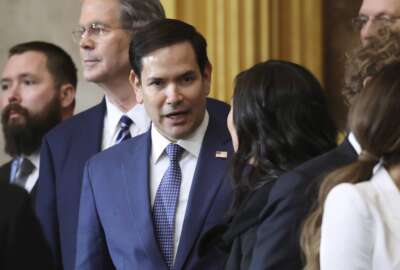Is the SES pay-for-performance appraisal system working?
With fewer SES awards being handed out, Carol Bonosaro, president of the Senior Executives Association, wonders whether executives are performing less well than...
The number of senior executives who received the highest performance rating fell from 47.3 percent to 45.2 percent, a 2.1 percent drop, from 2012 to 2013, according to a recent report from the Office of Personnel Management.
At the same time, the number of senior executives receiving performance awards dropped by 12.9 percent
“This is allegedly a pay-for-performance system and it’s operating less and less like that,” Carol Bonosaro, president of the Senior Executives Association, told Federal News Radio. “It’s because we have not seen any major drop in performance ratings, but we certainly have seen the drop in performance awards.”
The agencies seeing the greatest decrease in SES performance ratings were the Department of Health and Human Services (-14.9) and NASA (-20.6 percent). On the flipside, the departments of Human Services (32.9 percent) and State (40. 3 percent) saw the greatest increases, according to OPM’s figures.
The 12.9 percent reduction in senior executive performance awards governmentwide reflects a $523 drop in the average award amount from FY2012 to FY2013.
“What’s happened is that fewer of the higher performing executives are receiving awards,” Bonosaro said. “And those who are, are getting a smaller amount.”
She sees the reduction of awards and recognition for SES members as a steady progression over the last 10 years, starting when the Bush administration changed the awards system over to pay-for-performance, in which all pay adjustments are based upon performance discretionary with the agency.
“There is no locality pay and there was a steady drumbeat with regard to ratings generally, that their view was there were too many outstanding ratings, so there was pressure on the ratings themselves and then with this administration, pressure on the performance award pool,” Bonosaro said.
OPM and the Office of Management and Budget issued a joint memorandum on June 10, 2011, placing a spending limit on performance awards for the SES.
“Agencies must reduce total spending on individual performance awards for members of the Senior Executive Service (SES) and senior-level and scientific and professional employees (SL/ST) to no more than five percent of aggregate salaries,” the memorandum said. “Agencies must also reduce award spending for non-SES/SL/ST performance awards and individual contribution awards (e.g., special act) for all employees to no more than one percent of their aggregate salaries. These award spending targets apply for awards with effective dates during fiscal year 2012, with progress toward that level in fiscal year 2011, as reported to OPM under the agencies’ regular reporting procedures.”
According to the OPM report, the majority of agencies have implemented the basic SES appraisal system introduced in a Jan. 4, 2012, memorandum from OPM and OMB.
Bonosaro said it’s difficult to tell if the new appraisal system is effectively measuring the performance of senior executives.
“It was changed to make the performance standards the same as the qualifications that one must meet to enter the SES,” she said. “What we don’t know is how much effect having this system in fact has on performance. We certainly know it isn’t working terribly well. Are our executives, in fact, performing less well than they did 10 years ago or have the standards simply gotten tougher?”
Whatever appraisal system is in place, it should obviously reward performance, Bonosaro said. She just questions whether the current system does that.
“It’s very clear that these executives aren’t motivated by money or they wouldn’t be in the federal government to begin with,” Bonosaro said. “On the other hand, this system is becoming a demotivator in the sense that if you do put in an outstanding job and you’re working in a system that allegedly rewards it and then doesn’t, where does that leave you?”
Such a system, she said, could end up pushing executives toward retirement.
“Even more importantly, it acts as a further detractor to talented, able GS-15s or 14s, who might otherwise aspire to the SES,” she said. “The issue becomes, is the additional monetary award sufficient to make up for the increased responsibility, the increased risk? … Frankly, you duplicate what you reward and it’s an investment in attracting and retaining the best people.”
RELATED STORIES:
‘Broken’ pay system driving SES out of government
Paying for the next generation of federal managers
Copyright © 2025 Federal News Network. All rights reserved. This website is not intended for users located within the European Economic Area.
Michael O’Connell is senior digital editor of Federal News Network optimizing content for the best user experience. Follow @moconnellWFED
Follow @moconnellWFED






